Hi-Res Photos of Krema II Introduction Holes
Hi-Res Photos of Krema II Introduction Holes
A request to the board to aggregate together in one thread the highest quality, highest resolution colour photos of the introduction holes at Krema II. Preference for images that are:
High Res
Colour
Indicated / Notated visually
High Res
Colour
Indicated / Notated visually
Re: Hi-Res Photos of Krema II Introduction Holes
FYI there is a maximum size for attachments on the forum. This is to keep the forum database from sprawling in size.
For large images, I would recommend hosting them on an image hosting site of your choice. I like this one.
https://postimages.org/
For large images, I would recommend hosting them on an image hosting site of your choice. I like this one.
https://postimages.org/
Incredulity Enthusiast
Re: Hi-Res Photos of Krema II Introduction Holes
I don't think there are any color photos extant.
This one is on the higher side so far as resolution goes.

I'll look for some more. The ones from USHMM are also of fairly high resolution, but, they have recently changed how they are searchable and they are not as easy to pull up any more.
If you want the annotations, you want the CIA set released after Dr Butz wrote his book (I think). That is the photo set from Ball's book IIRC.
Here is another, this one is hosted by USHMM.

Notice no mysterious roof holes in this one from 13th September 1944
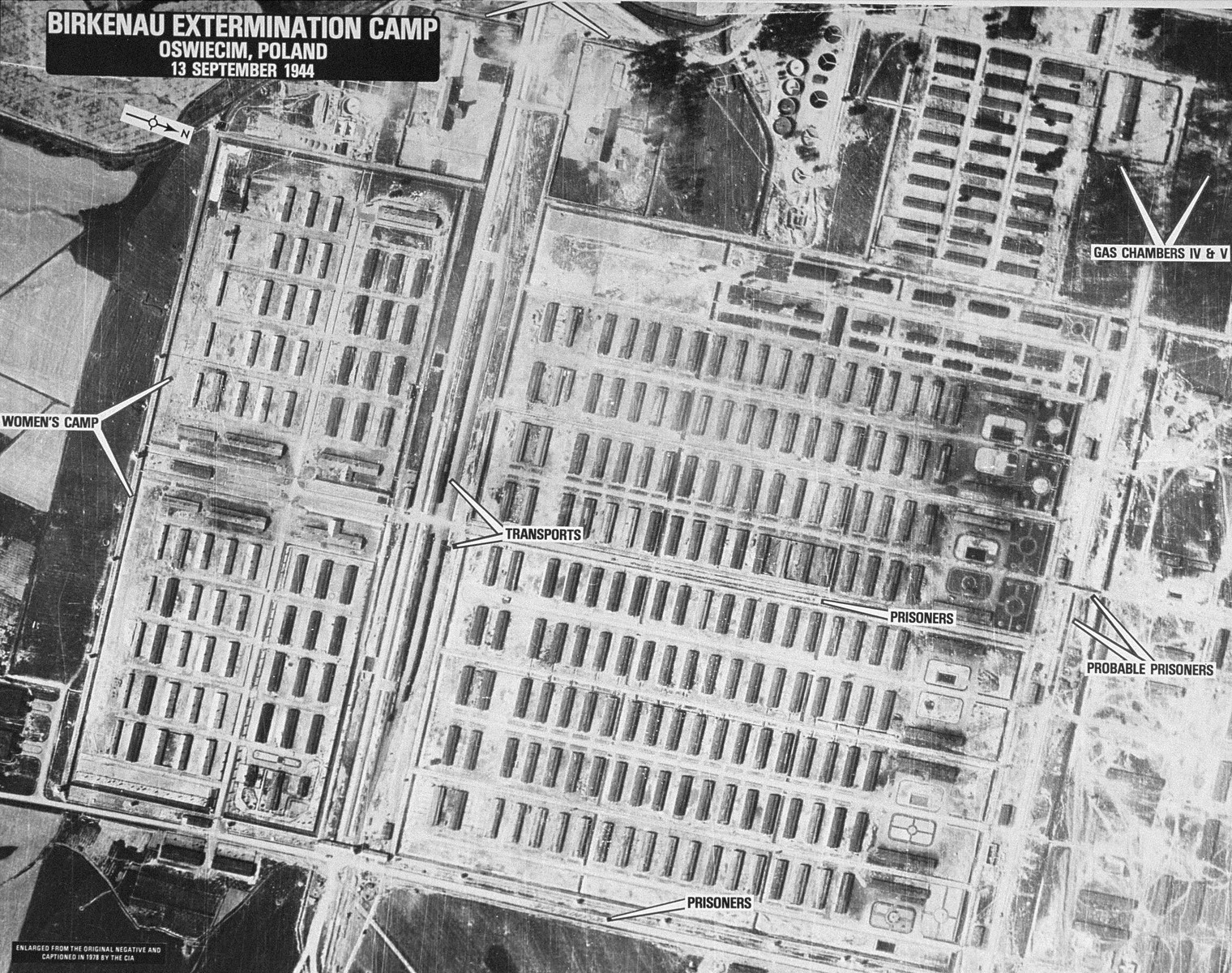
Also nothing 13th May 1944

Also, the title of this one has changed since I posted it here a while back.
https://collections.ushmm.org/search/catalog/pa28509
This one is on the higher side so far as resolution goes.

I'll look for some more. The ones from USHMM are also of fairly high resolution, but, they have recently changed how they are searchable and they are not as easy to pull up any more.
If you want the annotations, you want the CIA set released after Dr Butz wrote his book (I think). That is the photo set from Ball's book IIRC.
Here is another, this one is hosted by USHMM.
Notice no mysterious roof holes in this one from 13th September 1944
Also nothing 13th May 1944
Also, the title of this one has changed since I posted it here a while back.
https://collections.ushmm.org/search/catalog/pa28509
If I were to guess why no t4 personnel were chosen to perform gassing that had experience with gassing, it would be because THERE WERE NONE.
- Fred Ziffel
- Posts: 225
- Joined: Sun Dec 01, 2024 11:02 am
Re: Hi-Res Photos of Krema II Introduction Holes
I understand it has been pointed out before
Get a load of the ceiling hole sizes in Crem 2
Being CIA they could construct a better lie than this
Get a load of the ceiling hole sizes in Crem 2
Being CIA they could construct a better lie than this
- Attachments
-
- rtwrtyrtyw4.JPG (58.63 KiB) Viewed 3279 times
I do not believe anything one is not allowed to question
- borjastick
- Posts: 306
- Joined: Sat Sep 28, 2024 11:49 am
- Location: Europe
Re: Hi-Res Photos of Krema II Introduction Holes
I see about 300+ accommodation blocks in a mass murder death camp. Yet the Auschwitz album shows people, new arrivals, waiting in the forested grove for instant execution. Add into that calculation the German method of both packing the gas chambers and being able to cremate two corpses in less than 15 minutes I smell the smelly armpits of the 800lb gorilla in the room.
Hmm something doesn't add up here.
Asking for a friend.
Hmm something doesn't add up here.
Asking for a friend.
Of the four million jews under German control, six million died and five million survived!
Re: Hi-Res Photos of Krema II Introduction Holes
Thanks for getting the thread off to a start gentlemen, however I should have clarified: I am not limiting this to the camp's operational lifespan - I am moreso interested in photos of the holes themselves up close, which were primarily all taken in the early 90s. This alone means that alot of the ones I have seen tend to be poor quality
See below example as sniped from from Rudolf "The Chemistry of Auschwitz"

It also doesn't help that I've had to crop them out of e-books further adding to compression etc!
See below example as sniped from from Rudolf "The Chemistry of Auschwitz"

It also doesn't help that I've had to crop them out of e-books further adding to compression etc!
Re: Hi-Res Photos of Krema II Introduction Holes
CODOH hosts a copy of "The Ruins of the Gas Chambers: A Forensic Investigation of Crematoriums at Auschwitz I and Auschwitz-Birkenau".
https://codoh.com/library/document/the- ... -forensic/
However even after extracting the image files directly from that PDF, they seem to be of a lower resolution and quality than those on the Holocaust History Project website. So the below images are direct linked from there.
https://phdn.org/archives/holocaust-his ... les1.shtml
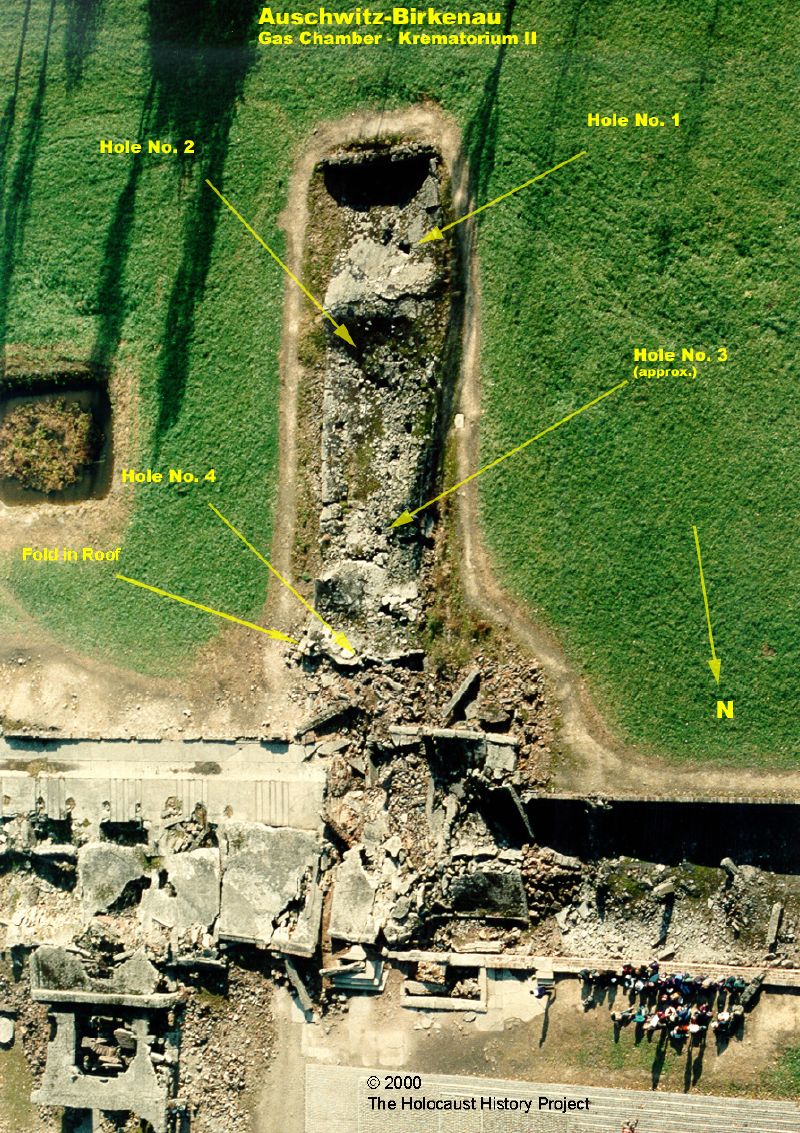
"Figure 1a. Aerial photograph of the gas chamber in Crematorium II (courtesy of Wojciech Gorgolewski)."
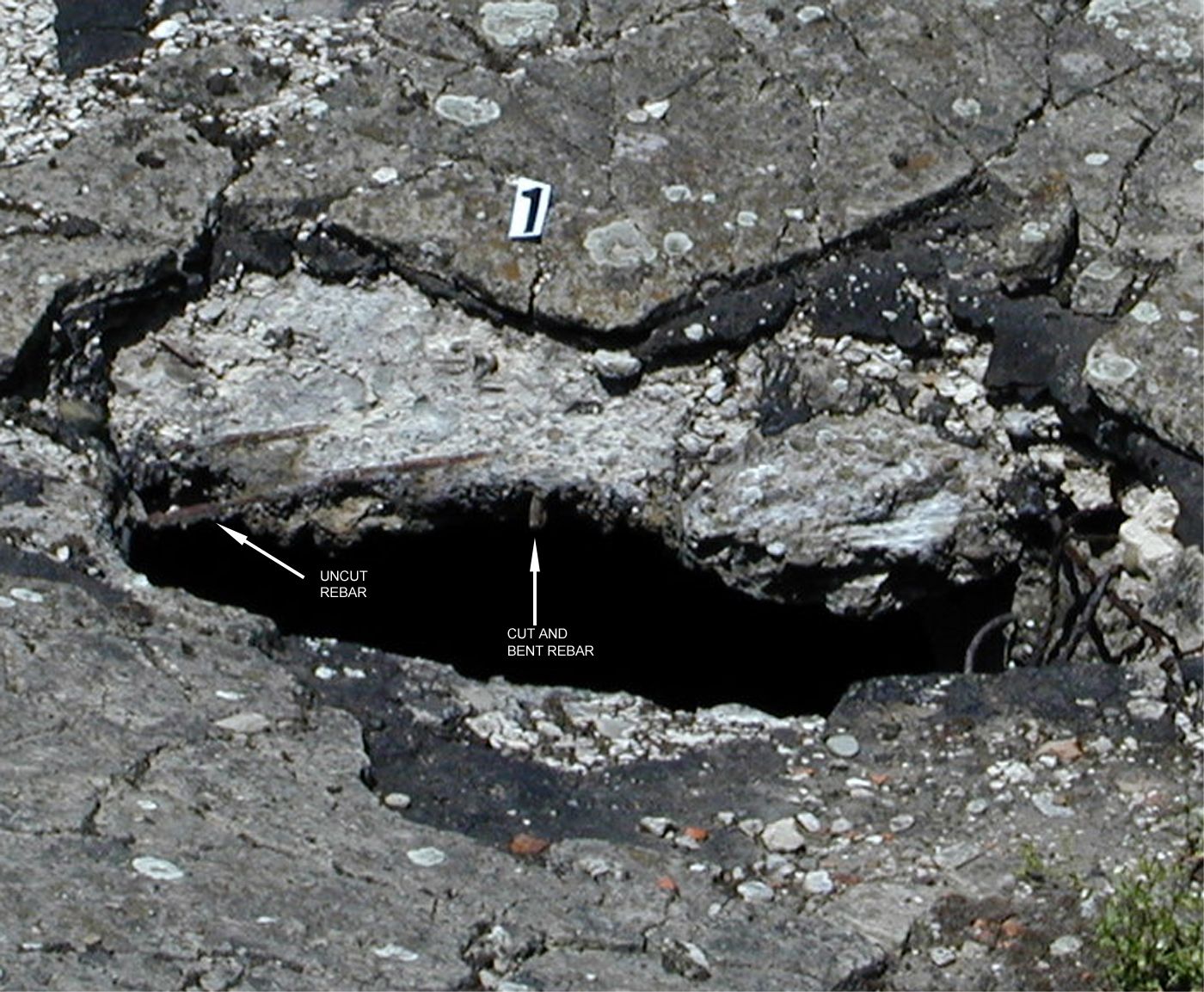
"Figure 8b. Area of Zyklon Hole 1, Crematorium II. Tarpaper separating concrete layer below and sand-cement layer above is visible. South to north view."

"Figure 9. Hole cut for unknown purpose in Crematorium II roof, likely after liberation in January 1945."
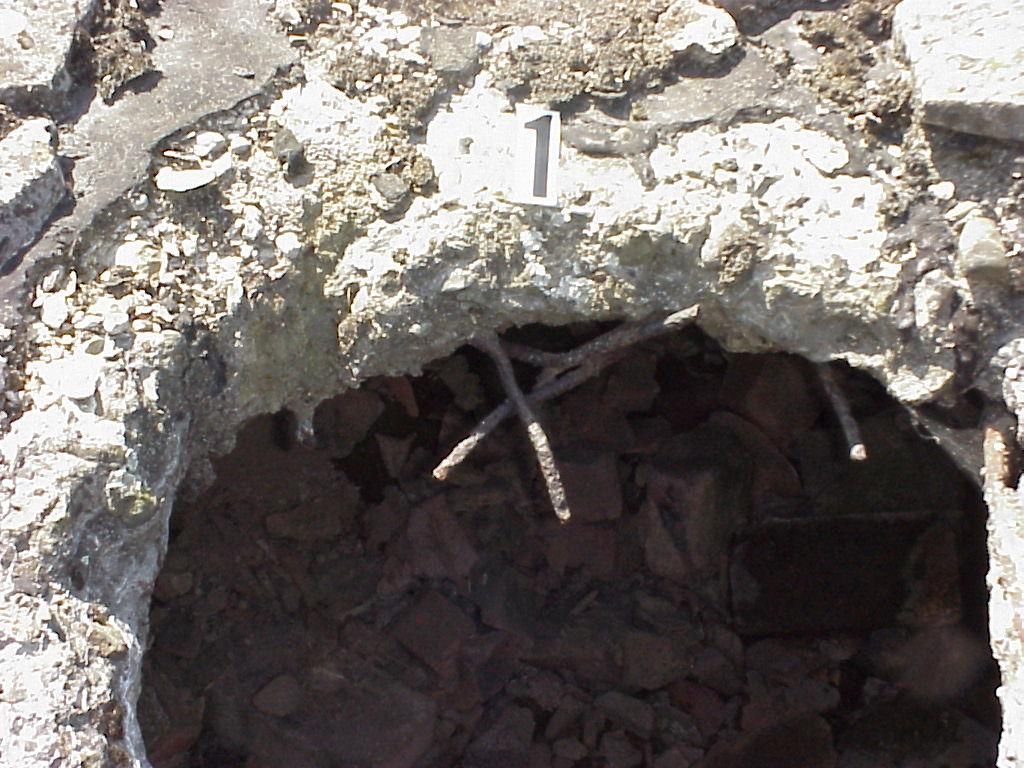
"Figure 11a. First (southernmost) Zyklon hole, overview. Taken from east looking west. Observe square form, with no rebar present; although damaged in explosion, hole clearly visible."
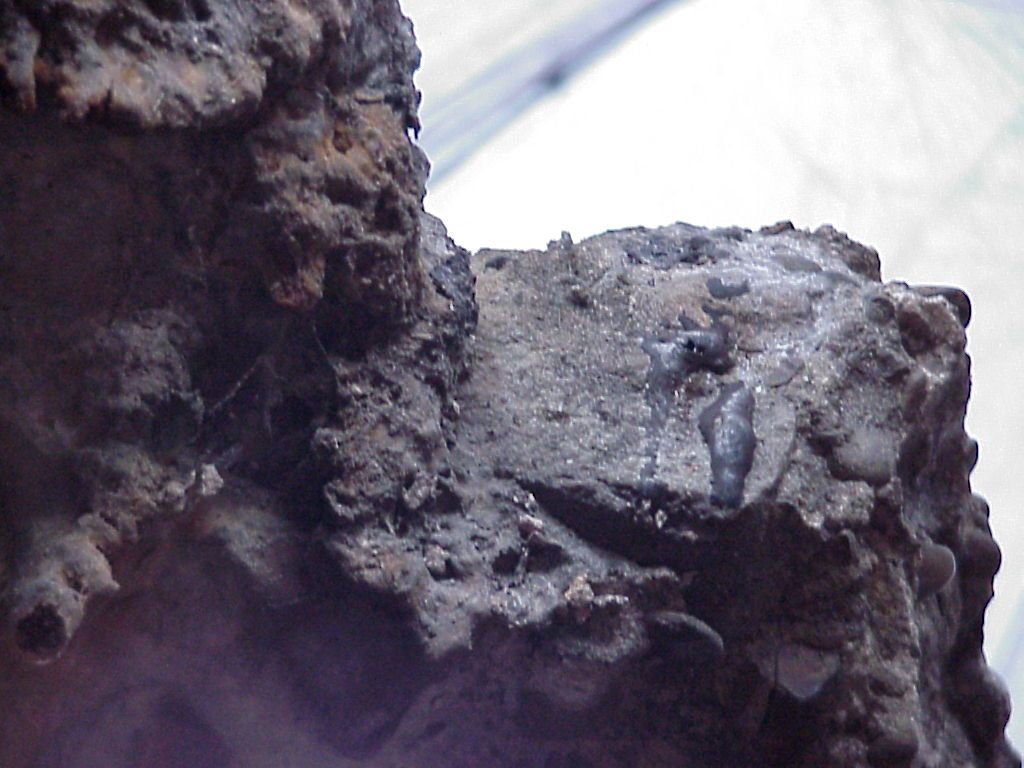
"Figure 11b. First (southernmost) Zyklon hole, detail. Taken from below, showing residue of dripping tar. Surviving crawl space approx. three feet here."

"Figure 12. Second (from south) Zyklon hole, east to west view. Chunk of concrete torn away by explosion lies atop northern edge; western edge completely shattered. Outline of hole superimposed."
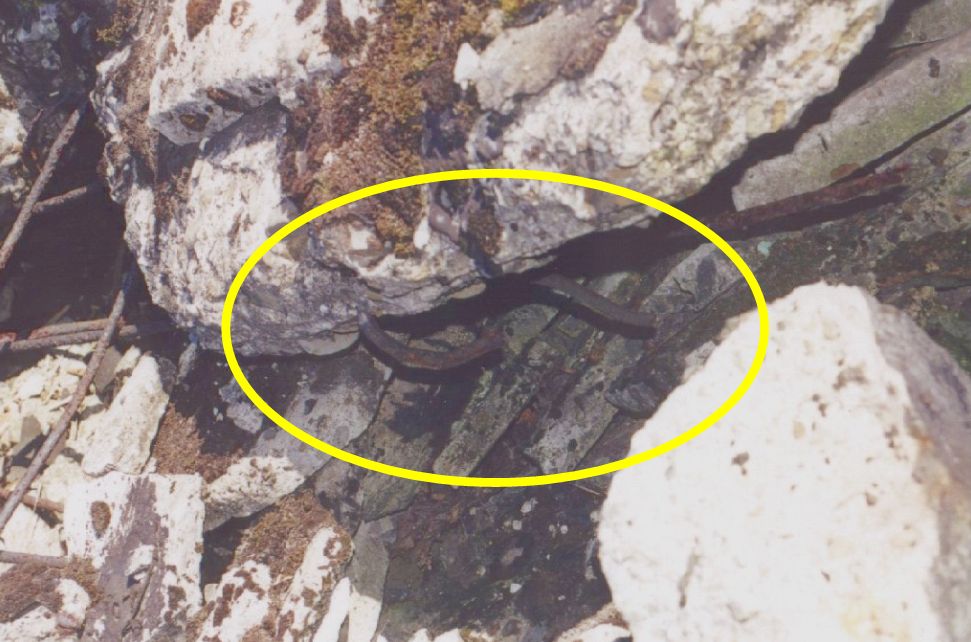
"Figure 13. Straight edge and inward-bent rebar on southern side of second Zyklon hole. Such bending could not result from the explosion, which lifted the roof upwards."
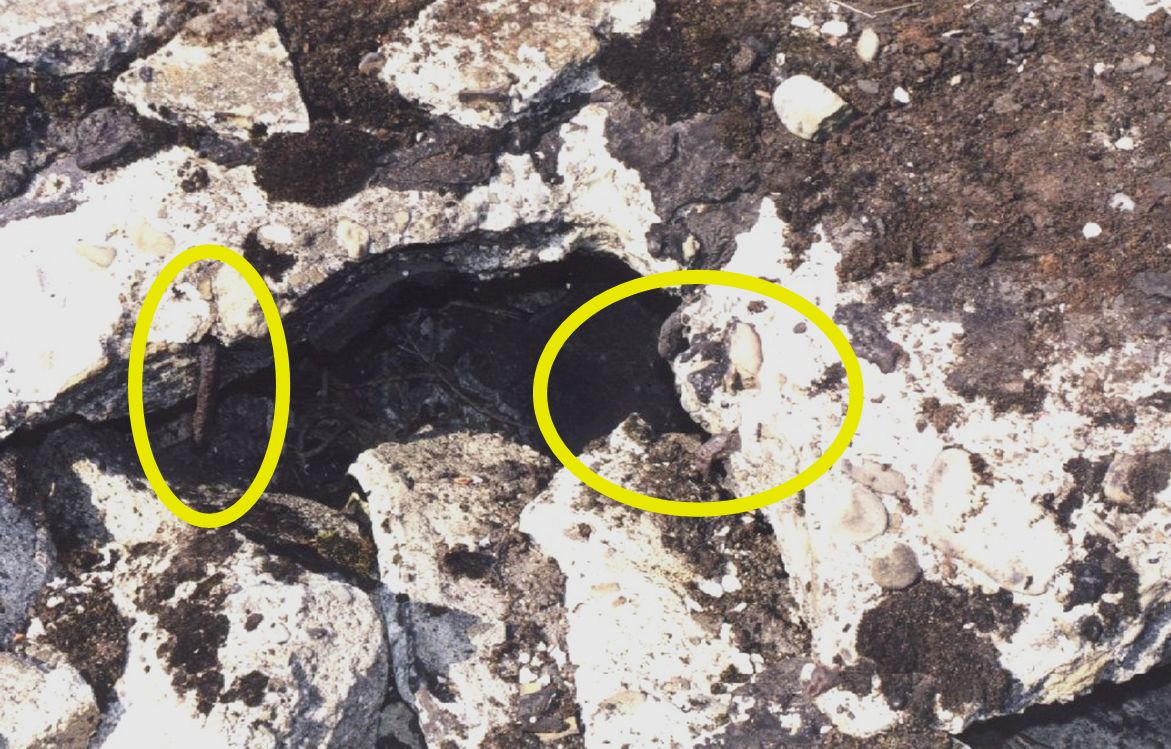
"Figure 14. Inwardly bent rebar at north and east edges of second Zyklon hole, partially destroyed in explosion."

"Figure 15. West-east view of hypothesized location of third Zyklon hole."
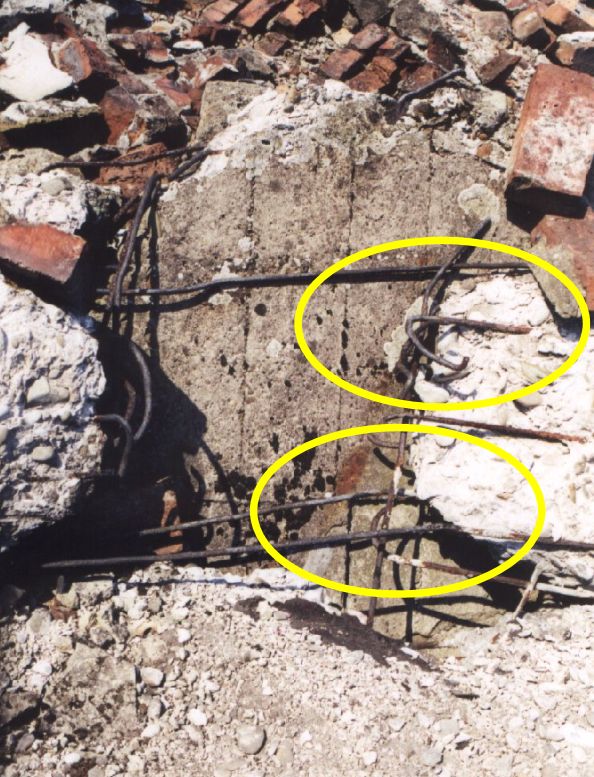
"Figure 16. Remains of fourth (seen from south) Zyklon hole. Rebar skirts two sides, ends at other two sides bent inward and looped back. Note rotated roof slab showing formwork on inner side."

"Figure 18b. Rebar stretched to a point at Zyklon hole 1, Crematorium II."
https://codoh.com/library/document/the- ... -forensic/
However even after extracting the image files directly from that PDF, they seem to be of a lower resolution and quality than those on the Holocaust History Project website. So the below images are direct linked from there.
https://phdn.org/archives/holocaust-his ... les1.shtml

"Figure 1a. Aerial photograph of the gas chamber in Crematorium II (courtesy of Wojciech Gorgolewski)."

"Figure 8b. Area of Zyklon Hole 1, Crematorium II. Tarpaper separating concrete layer below and sand-cement layer above is visible. South to north view."

"Figure 9. Hole cut for unknown purpose in Crematorium II roof, likely after liberation in January 1945."

"Figure 11a. First (southernmost) Zyklon hole, overview. Taken from east looking west. Observe square form, with no rebar present; although damaged in explosion, hole clearly visible."

"Figure 11b. First (southernmost) Zyklon hole, detail. Taken from below, showing residue of dripping tar. Surviving crawl space approx. three feet here."

"Figure 12. Second (from south) Zyklon hole, east to west view. Chunk of concrete torn away by explosion lies atop northern edge; western edge completely shattered. Outline of hole superimposed."

"Figure 13. Straight edge and inward-bent rebar on southern side of second Zyklon hole. Such bending could not result from the explosion, which lifted the roof upwards."

"Figure 14. Inwardly bent rebar at north and east edges of second Zyklon hole, partially destroyed in explosion."

"Figure 15. West-east view of hypothesized location of third Zyklon hole."

"Figure 16. Remains of fourth (seen from south) Zyklon hole. Rebar skirts two sides, ends at other two sides bent inward and looped back. Note rotated roof slab showing formwork on inner side."

"Figure 18b. Rebar stretched to a point at Zyklon hole 1, Crematorium II."
Re: Hi-Res Photos of Krema II Introduction Holes
I'm confused as to what the orthodoxy even believes on this point. The above linked report by McCarthy et al was in part a response to the Van Pelt Report. There, Van Pelt had already written:
So Van Pelt's view was that the holes are invisible and perhaps covered up by cement, totally contrary to McCarthy. Justice Gray agreed with this and reiterated it in his judgement:Today, these four small holes that connected the wire-mesh columns and the chimneys cannot be observed in the ruined remains of the concrete slab. Yet does this mean they were never there? We know that after the cessation of the gassings in the Fall of 1944 all the gassing equipment was removed, which implies both the wire-mesh columns and the chimneys. What would have remained would have been the four narrow holes in the slab. While there is not certainty in this particular matter, it would have been logical to attach at the location where the columns had been some formwork at the bottom of the gas chamber ceiling, and pour some concrete in the holes, and thus restore the slab.
So which is it? Did McCarthy find the holes or were they cemented over?In response to Irving's claim van Pelt maintained, firstly, that the roof is in such a mess and most of it is so inaccessible that it is impossible to verify whether or not the holes existed. In any case he claimed that it is likely that, when the gas chambers were dismantled in 1944, the chimneys would have been removed and the holes cemented over so as to remove incriminating evidence.
Re: Hi-Res Photos of Krema II Introduction Holes
Thanks to everyone that posted these images.
Do we have equivalent images of the holes in the roof of Krema 3?
Also, how many aerial photos of Birkenau have been released that correspond to the alleged gassing of the Hungarian Jews (May 15 to July 9th 1944)?
Do we have equivalent images of the holes in the roof of Krema 3?
Also, how many aerial photos of Birkenau have been released that correspond to the alleged gassing of the Hungarian Jews (May 15 to July 9th 1944)?
Re: Hi-Res Photos of Krema II Introduction Holes
This is excellent Wetzelrad, thanks for posting. This is exactly what I was looking to add to my archives.
Re: Hi-Res Photos of Krema II Introduction Holes
Hopefully this doesn't deviate from the purpose of the thread. I'm going to add the Zundel video with Ball here for posterity. If you have seen it already, it is the same video you've seen. If you haven't, it will be worth your time.
If I were to guess why no t4 personnel were chosen to perform gassing that had experience with gassing, it would be because THERE WERE NONE.
- Fred Ziffel
- Posts: 225
- Joined: Sun Dec 01, 2024 11:02 am
Re: Hi-Res Photos of Krema II Introduction Holes
You know, I think I can see the rebar in my last posting attachment here 
I do not believe anything one is not allowed to question
Re: Hi-Res Photos of Krema II Introduction Holes
Thank you for posting this video. There is inescapable evidence presented of the aerial photos having been altered.
It's unfortunate that the video and sound quality is so poor.
I hope in the future to see someone make an updated video covering this same evidence.
Does anyone recall a video in which John Ball mentions the government's refusal to release some of the original reels for examination?
- Fred Ziffel
- Posts: 225
- Joined: Sun Dec 01, 2024 11:02 am
Re: Hi-Res Photos of Krema II Introduction Holes
Bit Chute may have something
I do not believe anything one is not allowed to question
Re: Hi-Res Photos of Krema II Introduction Holes
This is an outstanding video. Recently, I watched one where John Ball did a sit-down interview with Zundel, and while that was very informative, this video was much more in depth. At around the 42-minute mark, he discusses allied intelligence activities that have to do with the Auschwitz complex, especially Monowitz. Is there any material that discusses the extent to which allied intelligence was monitoring the claimed extermination camps and thoroughly investigating claims of mass extermination? I don't want to get off topic in this thread, but I think this could be a subject worth investigating in a separate post.
This is the first thing that drew my attention when I initially looked at these pictures. Comparing them to the close-up pictures of the holes of the Cremas posted by Wetzelrad, they are way too big to even be argued that they are the same. If there was a way to scale the holes on the picture to compare to the size of a human, then I believe that it would only make them look more ridiculous. The other glaring issue in the August 25th photo that I noticed is the layout of the holes in the roof of the two Cremas. In Crema II, the photo shows that they are in somewhat of a straight line. Crema III, however, shows that they are in a somewhat distinct diagonal pattern (I believe that this is how they are described in orthodoxy). We know that these facilities were made to be mirror images of each other based on design documentation. Did the Germans one day decide to go with two different hole patterns for each "gas chamber" instead of making them identical? This wouldn't seem to make any sense if they are supposed to be identical. The alignment differences between the two Cremas could be attributed to the shot angle, shadows, or other minute factors, but this would be a massive stretch. The much more reasonable and plausible explanation is that the people who drew the holes on the roof made a mistake.
Another small detail that bugs me about the photo is the "group on way to gas chamber" label. Whether or not these people were drawn on, there is no way to determine from this photo which direction they were walking, and more importantly the intention behind their movement. The more appropriate label would have been something along the lines of "prisoners located on the unloading platform", or even just "prisoners" like others are labeled.
Sometimes I stood there thunderstruck.